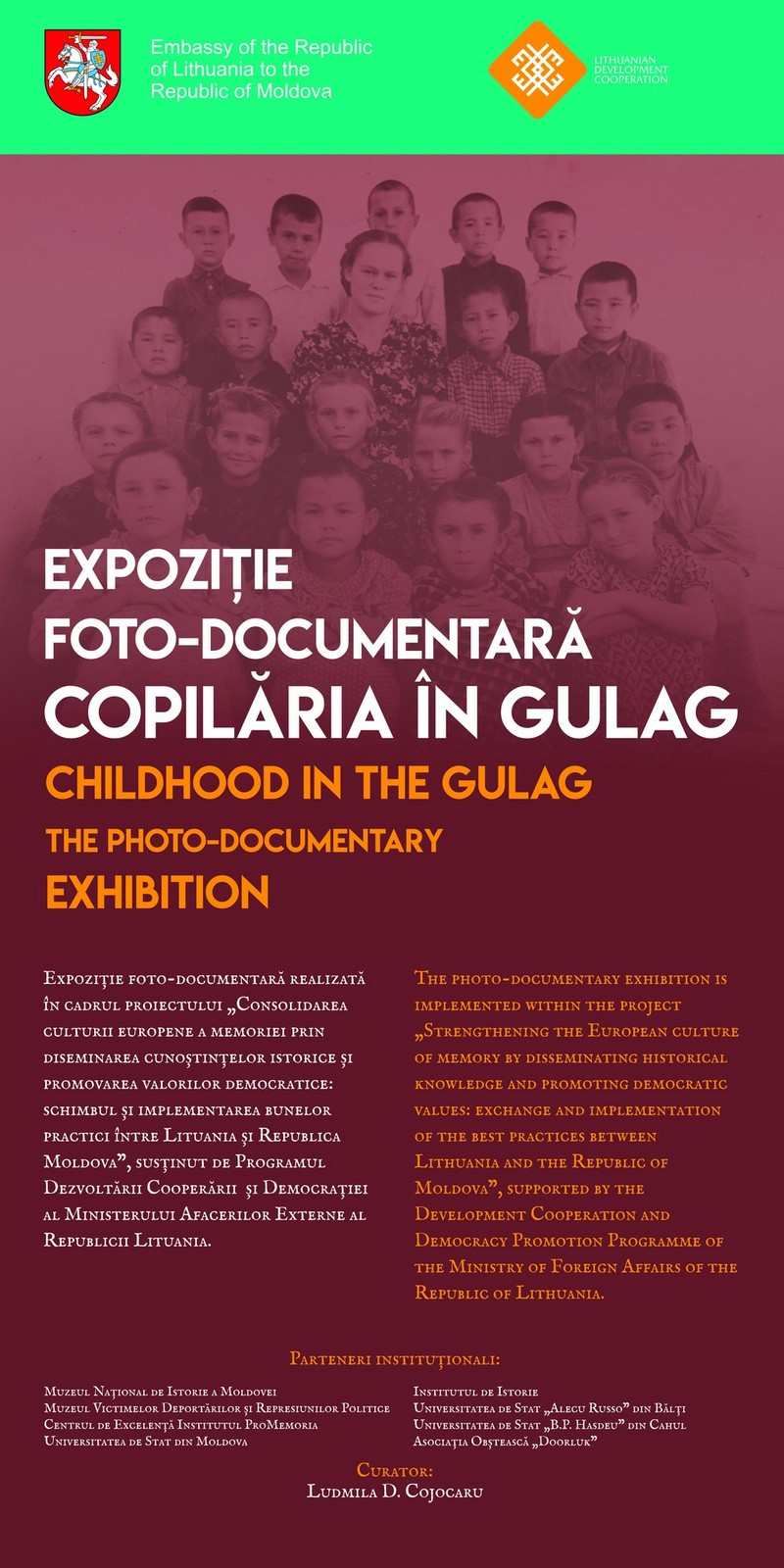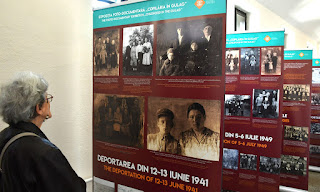 On May 25, 2023, at the invitation of colleagues from the Civic Academy in Bucharest, Romania the "Childhood in the Gulag" vernissage took place (curator Dr. Ludmila D. Cojocaru) - an event organized as part of the commemorative activities devoted to "The Memorial Day", at the Memorial to the Victims of Communism and of the Resistance from Sighet.
On May 25, 2023, at the invitation of colleagues from the Civic Academy in Bucharest, Romania the "Childhood in the Gulag" vernissage took place (curator Dr. Ludmila D. Cojocaru) - an event organized as part of the commemorative activities devoted to "The Memorial Day", at the Memorial to the Victims of Communism and of the Resistance from Sighet.
The exhibition presents photo-documentary images about the life of Bessarabian children condemned by the totalitarian-communist regime of the Moldavian SSR to deportation, starvation, Russification, indoctrination, forced excision from their own families, during the years 1940-1941 and 1944-1953.
The exhibition approach brings together about 180 photo-documentary images, accompanied by memories and archival documents from the collections of the National History Museum of Moldova, the Edineț County Museum, the Museum of History and Ethnography from Soroca, the INIS ProMemoria Archive of the USM, as well as from the archives of the communities memory and of the survivors of the totalitarian-communist regime in the Moldavian SSR.
The opening was inaugurated by the President of the Academia Civică Foundation, Ms. Ana Blandiana, who warmly welcomed the presence of the exhibition within the commemorative events at the Memorial in Sighet and the need to strengthen efforts to disseminate historical knowledge related to the totalitarianisms of the 20th century. The concept of the exhibition was presented by Dr. Ludmila D. Cojocaru and Dr. Virgiliu Bîrlădeanu, mentioning the actuality of the recovery, documentation and historical valorization of the testimonies of the victims of the totalitarian-communist regime in Bessarabia.
The inauguration of the photo-documentary opening "Childhood in the Gulag" at the Sighet Memorial is a tribute to the children who went through the atrocities of the totalitarian-communist regime in the USSR, as well as an action to commemorate the victims produced among children in the war started by the Russian Federation against Ukraine.
The photo-documentary exhibition "Childhood in the Gulag" can be visited between May 25 - August 31, 2023, at the headquarters of the Sighet Museum (str. Corneliu Coposu, no. 4, Sighet town, Maramureş county, Romania).
The Opening of the photo-documentary exhibition „Childhood in the Gulag" was organized within the project „Edification of a European culture of memory by promoting intergenerational communication and cross-border cooperation. Exchange and implementation of the best practices between Lithuania and Moldova", with the support of the „The Development Cooperation and Democracy Promotion Programme" of the Ministry of Foreign Affairs of the Republic of Lithuania.




























































